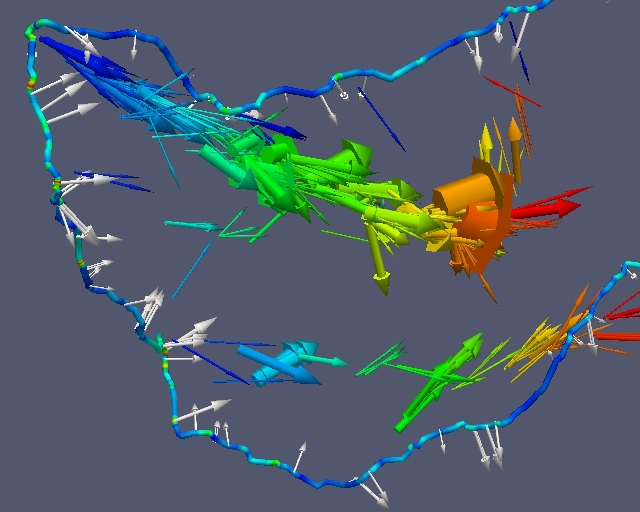
Cosmic strings are astronomically long, microphysically thin filaments which may exist in our universe. When strings intersect themselves, they can reconnect and so chop off moving loops, which may be observable sources of cosmic rays or gravitational waves.
The wiggly tube shows the shape of a cosmic string taken from a simulation, at a particular moment in time. This string is about to emit several bursts of loops. The color of the string shows its rate of motion, red being very close to the speed of light and blue being slowest, and the white arrows show the direction and velocity of selected string segments.
Each colored arrow represents the emission of one loop. The starting point of the arrow is the point where the loop breaks off the long string (or a predecessor loop). The width of the arrow is proportional to the size of the loop, and the length and direction of the arrow show the loop velocity. In general the larger loops move more slowly, and some of the smallest loops travel at nearly the speed of light. The color of the loop represents the time of emission: the dark blue loops are just about to be emitted, while the red loops will be emitted last. Starting from the position shown, the string travels toward the right, sweeping across the field of view and emitting several hundred loops as it passes.
This picture won second place in the Illustrations category in the 2011 Visualizing Research@Tufts Awards